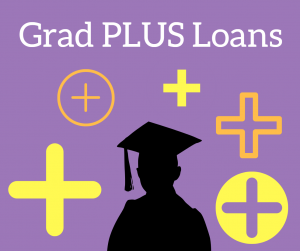 You got into graduate school! That’s amazing, but that also means you have to pay for grad school. How do you do that? Grad PLUS Loans are federal student loans that students can take to cover the costs of grad school. Only students attending programs in a graduate or professional school are eligible to take out Grad PLUS Loans.
You got into graduate school! That’s amazing, but that also means you have to pay for grad school. How do you do that? Grad PLUS Loans are federal student loans that students can take to cover the costs of grad school. Only students attending programs in a graduate or professional school are eligible to take out Grad PLUS Loans.
The federal government funds these loans. Of course, filing the Free Application for Federal Student Aid or FAFSA is a mandatory requirement for borrowing money from this program.
Eligibility Requirements
Your creditworthiness determines your eligibility to apply for a Grad PLUS Loan. When you submit the FAFSA, lenders will first check your credit history. As a result, they can determine whether or not you are eligible for a loan. Students with good credit history will find it easier to borrow money from this program. Students who have poor credit history are required to have a credit-worthy cosigner in order to get funds through the Grad PLUS Loan program.
It’s true that your credit history determines whether or not you qualify for a loan, unlike most other loans. However, having better credit does not necessarily lower the interest rate you are offered through Grad PLUS Loans.
Additionally, demonstrated financial need is not part of the eligibility requirements for borrowing money through the Grad PLUS program.
Loan Limits & Interest Rates
Grad PLUS Loans allow students to borrow up to the full cost of attendance less any other financial aid that they may have received. If you meet all the requirements, you could potentially pay the entire cost of graduate school with funds received through Grad PLUS Loans.
Graduate PLUS Loans have a fixed rate of interest, which is set by the federal government. This interest rate may change every academic year.
When calculating the amount you want to borrow and the rate of interest, you must take into account the origination fee that you have to pay. This fee is approximately 4.3% of the total amount. Your loan disbursal deducts the fee. During repayment, this fee is part of your outstanding loan balance.
The funds go directly to your school and credited to your student account.
Interest on the money you borrow starts accruing from the moment the loan is disbursed. What if you have the money and can make early payments? Well, it is advisable to put the early payments towards the principle so that the principle gets reduced. The lower the principle, the less the interest accrued.
Repayment Options
The standard repayment term on Grad PLUS Loans is 10 years. Depending on your income and other factors, you may be eligible for most of the repayment plans offered by the Department of Education. This includes the extended, graduated, income-based, and pay-as-you-earn repayment plans among others. Take a look at your repayment options and choose the one that best suits your financial situation and your ability to repay the loans.



